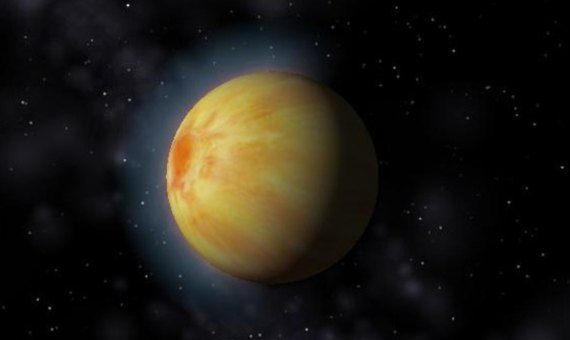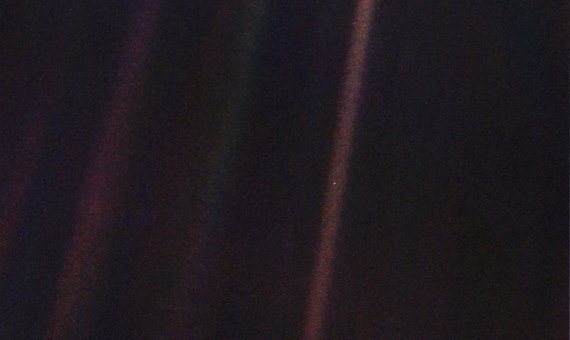When in 1995 astronomers Michel Mayor and Didier Queloz described 51 Pegasi b, the first exoplanet orbiting a star similar to the Sun, the extrasolar worlds were still a big unknown. Since that pioneering discovery —which earned them both the Nobel Prize in Physics in 2019— the number of new exoplanets has multiplied exponentially, reaching the astonishing current figure of more than 4,000 confirmed. And yet, the initial expectations of rapidly finding one or more pseudo-Earths have not yet been fulfilled. Are planets like Earth rare? Do we live in a more special place than we first thought?
The interest in finding planets similar to Earth is obvious: ours is the only inhabited world we know of, so an Earth 2.0 would be an unbeatable candidate for finding the first example of alien life, perhaps even intelligent. Thus, the search for our twin planet is the search for another habitable place in the universe, one that might actually be inhabited.

Traditionally, researchers have defined habitable planets according to the distance to their star. Depending on the type of star, there is an orbital band in which temperatures theoretically allow for the existence of liquid water. This region is neither too hot, nor too cold, and is informally known as the Goldilocks zone, alluding to the girl in the famous children’s fairy tale with the three bears.
But naturally, in addition to water, there are many other parameters that make our planet a suitable place for life. The need for a rocky substrate, an atmosphere and an adequate size are evident. Regarding the latter, a recent study suggests that planets as small as 2.7% of the Earth’s mass could retain an atmosphere (the mass of the Moon is 1.2% that of the Earth).
Habitability criteria
Size is precisely one of the big difficulties in locating these planets. The first exoplanets detected were gas giants; the one found by Mayor and Queloz, today called Dimidio, is 150 times the terrestrial mass. These giants are easier to find with current technology than small rocky planets. “There is of course a bias of the exoplanet detection methods,” planetary scientist Anat Shahar of the Carnegie Institution for Science tells OpenMind. “The smaller a planet, the harder it is to find.” Nevertheless, the refinement of the techniques has allowed the detection of very small exoplanets, even the size of our Moon.
On the basis of these criteria, the discovery of new “inhabitable” worlds periodically hits the headlines. And yet, are they really so? When the discovery of the spectroscopic signature of water on planet K2-18b was published last September, it was announced that it was the first case of water confirmed on a habitable planet. But as exoplanet researcher Laura Kreidberg of the Harvard & Smithsonian Astrophysics Center noted, data on K2-18b suggests that its temperature and atmospheric pressure are incompatible with life.
The truth is that many experts have been warning that the classic habitability criteria are not enough: “By defining the goldilocks zone as only by star type and distance, we have a great start to look for a habitable planet, but it is likely not enough,” says Shahar. “There is just not enough research to understand what a habitable planet requires, and therefore where to look for one.” In the case of the search for terrestrial twins, planetary scientist Edward Schwieterman, of the University of California at Riverside and NASA’s Institute of Astrobiology, tells OpenMind that it is not enough to find planets in habitable areas that are similar in size and mass to the Earth, but that they must also resemble one another in their atmospheric composition and temperature.

Scientists say that additional factors may be relevant to the habitability of a planet, such as a strong magnetic field. A recent study suggests that only one of the rocky exoplanets analysed, Kepler-186f, could have a magnetism similar to that of the Earth, which in the case of our planet has prevented the loss of water and the atmosphere. However, a recent analysis by Schwieterman and his collaborators indicates that Kepler-186f may have levels of CO2 toxic to complex life as we know it. In fact, according to this paper, many of the planets considered to be in habitable areas are likely to have too high CO or CO2 concentrations.
The habitability requirements don’t end there. In a recent article in the journal Science, Shahar and her collaborators stressed the importance not only of the surface of a planet, but also the planet as a whole and throughout its history: its chemical composition, its evolution and essential geological processes. “We argued that a planet’s habitability is a function of its several-billion-year-old history,” explains the scientist. “It is important for a planet to have received all the ingredients needed for life, for it to have a magnetic field, a way to recycle nutrients (such as plate tectonics), as well as of course liquid water.”
But this may not be enough to make a planet habitable either. As planetary astronomer Franck Marchis of the SETI Institute tells OpenMind, even the complete configuration of a stellar system influences the possibility of it harbouring life. “The study of our own solar system has shown that the existence of two giant planets has been key to bring water in the inner part of our solar system,” Marchis says. “In fact we suspect that the water in the ocean of Earth comes from asteroids which were moved after gravitational interaction between those giant planets.” And according to a recent study co-authored by Marchis, who has analysed 300 observations of nearby stars from the Gemini Planet Imager Exoplanet Survey, “Jupiter-mass planets may be rare,” he says.
A reason for optimism
In short, there is still no clear answer to the question of whether pseudo-Earths or actually inhabitable planets in general, or capable of harbouring complex life, are abundant or not. “At this point I would say we have no idea,” Shahar concludes. “We need to look more carefully and completely with better and more capable telescopes,” adds Schwieterman. “However, we shouldn’t be surprised if the exact conditions we find on Earth today are somewhat rare.”

But there is one trump card that gives reason for optimism, and that is that the number of exoplanets seems huge. According to Schwieterman, “if we start from the original expectation of say, 10 billion potential Earths in our galaxy, but it turns out true Earths in terms both of size, mass and atmospheric composition are 1,000 times as rare, that is still ten million Earths in the galaxy. Of course, the real number could be substantially higher or lower than this, we don’t know for sure yet!”
For his part, Marchis has just presented a study on the possibility of using next-generation telescopes to take direct images of a possible Earth 2.0 in Alpha Centauri, the nearest star system, a photograph that, if obtained, would be comparable to the famous image of Earth taken in 1990 by the Voyager 1 probe from six billion kilometres away, and which was baptized by astronomer Carl Sagan as “the pale blue dot.” As Marchis writes, “The first image of Another Pale Blue Dot will broaden humanity’s horizon, launch new scientific studies, and motivate humanity to develop more missions to explore and characterize these worlds. In return, one of these missions could answer a key question humanity has asked for centuries: Are We Alone?”
Comments on this publication